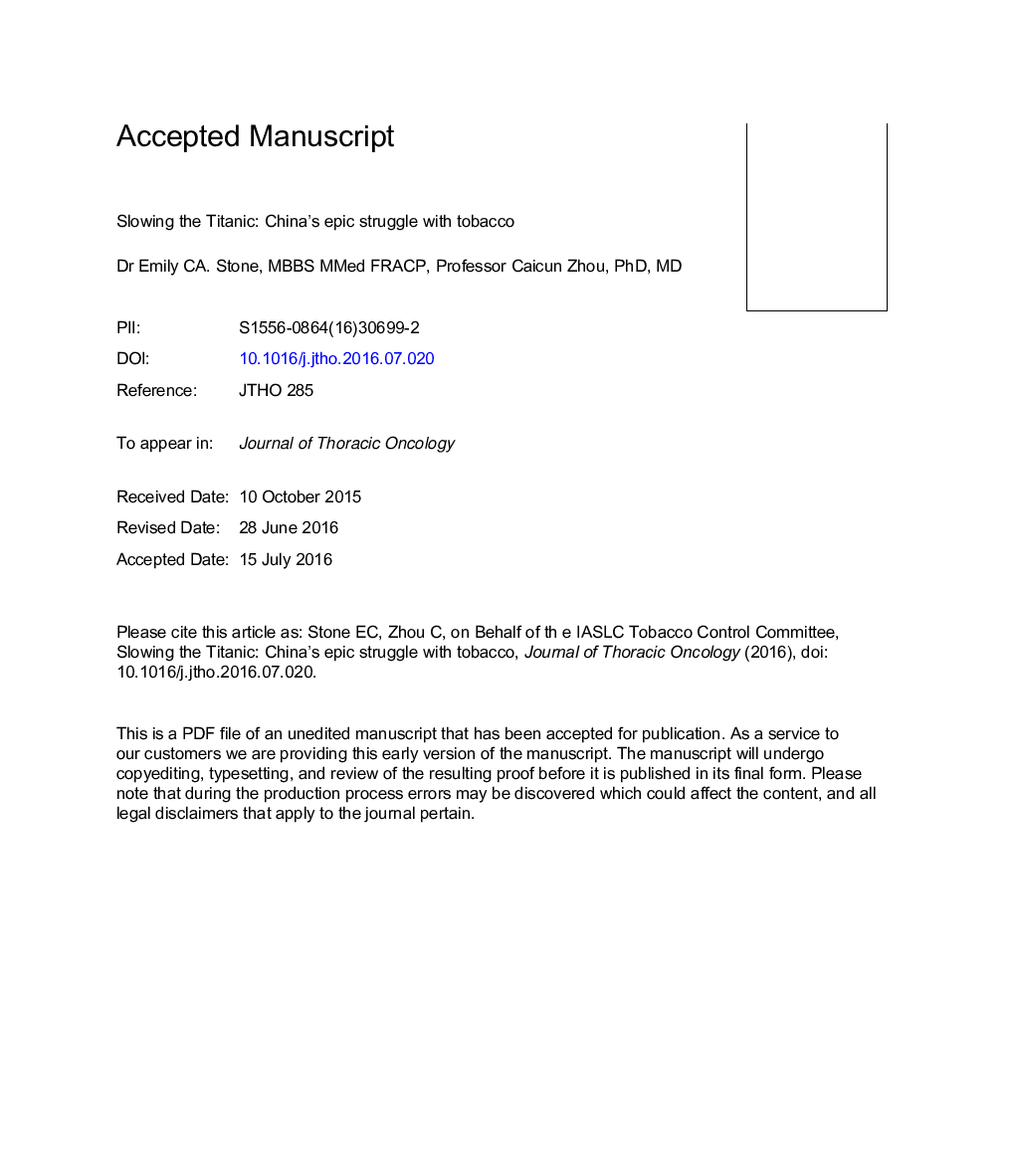| Article ID | Journal | Published Year | Pages | File Type |
|---|---|---|---|---|
| 5701745 | Journal of Thoracic Oncology | 2016 | 40 Pages |
Abstract
China is home to a third of the world's smokers and, correspondingly, to a third of the world's cases of lung cancer. Beginning in the mid-1990s, a generation or so later than in many Western countries, the Chinese government commenced measures to control tobacco, limiting advertising, banning smoking in many public venues, and increasing taxation. At the time of this review, there are signs that these policies are having some effect, but hundreds of millions of Chinese continue to smoke and rates of diagnosis of lung cancer continue to rise. There is much work to be done and much premature death to be suffered before the epidemic is slowed to the levels reached in Australia or the United States. This article aims to provide, particularly for practicing lung cancer clinicians, a description of patterns of smoking in China, the lung cancer epidemic there, and the stimuli for and barriers to tobacco control imposed by the highly complex and unique regulatory setting of the Chinese tobacco industry. A particular challenge in developing this description has come from the variability of studies published about a huge nation that has enormous diversity in wealth, education, urbanization, and tradition. The studies vary because the data vary. Much information on lung cancer and smoking rates in China comes, for example, from studies of cohorts that may number in the millions yet represent only a small percentage of the population and sometimes only a tiny geographic area of such a vast nation. National registry data on lung cancer in China do not yet cover even a fifth of the national population. Even so, we argue that several major trends can be identified: (1) more than 50% of men smoke regularly; (2) there are more than 300 million smokers in China; (3) almost half a million new cases of lung cancer are diagnosed in China each year; (4) secondhand smoking is a significant problem in China (as elsewhere), accounting for a high proportion of lung cancer cases among women, most of whom do not smoke; (5) corrected for age and sex, lung cancer rates in the Chinese population are as least as high as in Western countries and arguably higher; and (6) a shift over time from squamous cell carcinoma (SCC) to adenocarcinoma is occurring in parallel with that noted in Western populations. Looking to the future, measures to control tobacco in China are strengthening but remain relatively weak. The reinforcement of control is hampered by the circumstance that the tobacco industry remains a powerful state-owned monopoly that participates, through its membership of key government bodies, in the processes that oversee the implementation of tobacco control. The conflict between the government's dual responsibilities for both the production and distribution of tobacco and for the implementation of tobacco control carries inherent contradictions and bias. How long the Chinese government chooses to live with these contradictions will determine how quickly the smoking of tobacco will be reduced and how soon the burden of disease that tobacco inflicts on individuals and society as a whole will be eased.
Related Topics
Health Sciences
Medicine and Dentistry
Oncology
Authors
Emily C.A. M.B.B.S., MMed, Caicun PhD, MD, International Association for the Study of Lung Cancer Tobacco Control Committee International Association for the Study of Lung Cancer Tobacco Control Committee,
